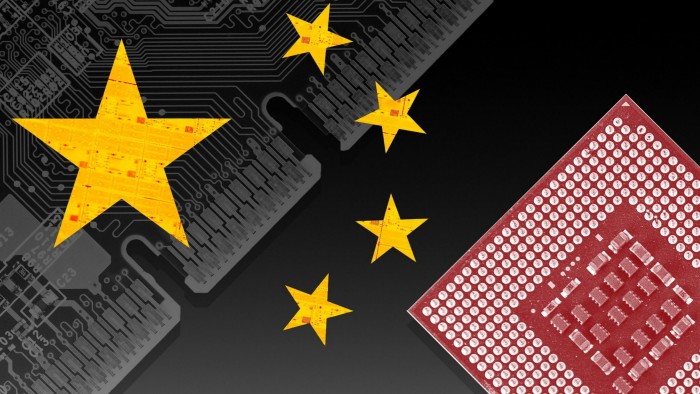China’s chipmakers are seeking to triple the country’s total output of artificial intelligence processors next year, as domestic groups such as DeepSeek push for the semiconductors needed to match western rivals in developing the most advanced AI.
One fabrication plant dedicated to producing Huawei’s AI processors is scheduled to start production as soon as the end of this year, while two more are due to launch next year, said two people with knowledge of the plans.
While the new plants are designed to specifically support Huawei, it is not clear who exactly owns them. Huawei denied having plans to launch its own fabs and did not provide further details.
Chinese companies are also racing to develop the next generation of AI chips adaptable to a standard advocated for by DeepSeek, which has emerged as the country’s leading AI start-up.
Huawei’s latest products are seen as among those that would satisfy DeepSeek’s requirements.
Combined capacity from these three new plants, once fully ramped up, could exceed the current total output of similar lines at Semiconductor Manufacturing International Corporation (SMIC), China’s leading fab, according to those people with knowledge of the effort.
The people added that SMIC also planned to double its capacity next year for making chips at 7 nanometres — the most advanced mass-produced type in China. Huawei is SMIC’s largest customer at present for such processor lines.
As a result, smaller Chinese chip designers such as Cambricon, MetaX and Biren will be able to get much larger allocations of SMIC’s capacity, spurring competition for a fast-growing China market left by Nvidia following US export bans.
Semiconductors are at the heart of trade tensions between Beijing and Washington. The US has restricted access to the top AI processors made by global leader Nvidia, in an effort to restrain Chinese efforts to develop AI.
“Domestic output won’t be an issue for long, especially with all the capacity coming online next year,” said one Chinese chipmaker executive.
Chinese companies are also racing to develop the next generation of AI chips adaptable to a standard advocated for by DeepSeek, which has emerged as the country’s leading AI start-up.
DeepSeek announced last week that its models were now using a type of FP8 data format, designed to adapt to the next generation of domestic chips, without specifying from which supplier.
Share prices of listed Chinese semiconductor companies such as Cambricon and SMIC surged following the announcement.
Huawei’s 910D as well as Cambricon’s 690 are seen as leading products tailored to support Deepseek’s preferred standards, while multiple smaller Chinese chipmakers are also accelerating the development of their versions.
DeepSeek chose this data format because it increases the efficiency of hardware, at the cost of precision, which could create a way to help Chinese AI players compete with international rivals even if their chips are generations behind Nvidia’s leading offerings.
“If we succeed in developing and optimising these Chinese chips to train and run Chinese models in a continuously evolving Chinese ecosystem, one day we will look back at this shift as an even more significant DeepSeek moment,” said the chipmaker’s executive. “This unprecedented alignment could make up for our less advanced hardware capability.”
However, such an effort would require a years-long collaboration between makers of computing chips with those making hardware for memory and connectivity, as well as software tools required to support them.
China is making pushes in other critical areas as well, such as memory chips, at present dominated by Samsung, SK Hynix and Micron — all subject to US export controls.
Leading Chinese player CXMT is testing samples of “HBM3” high bandwidth memory products with a target to launch next year, according to two people with knowledge of the matter. The product is only one generation behind the most advanced memory products used by Nvidia’s chips.
While DeepSeek has done early work on Chinese chips in small samples, to prove that it is technically viable, the group’s current model training is done on Nvidia chip clusters, the Financial Times has reported. This could change once more Chinese domestic chips become adaptable to its standard and improve their performance.
“Necessity begets innovation,” said an investor in multiple Chinese semiconductor and large language model start-ups. “Companies in Silicon Valley won’t even bother to do what DeepSeek is doing because they can get as many advanced Nvidia chips as they want.”
Beijing is putting significant political and financial support behind such pushes. The State Council called this week for greater AI adoption in the country, as well as “integrated and co-ordinated development of AI-driven technology research and development, engineering implementation, and product commercialisation”.
Cambricon, listed in Shanghai, received approval to raise about $600mn this year. Four smaller AI chipmakers, including Biren and MetaX, are seeking to go public as soon as the end of this year, having raised about $3bn combined in pre-IPO rounds.
If successful, the push to create alignment between China’s AI hardware and software companies could meet DeepSeek’s founder Liang Wenfeng’s call to challenge Nvidia’s global lead.
“Nvidia’s lead is not created by a single company, but a collaborative effort by the whole western community and industry,” Liang told Chinese media last year. “China’s AI development needs the same ecosystem. China needs someone to stand at the forefront of such development.”
SMIC, Cambricon, DeepSeek, CXMT, Biren and MetaX did not respond to the FT’s request for comment.
